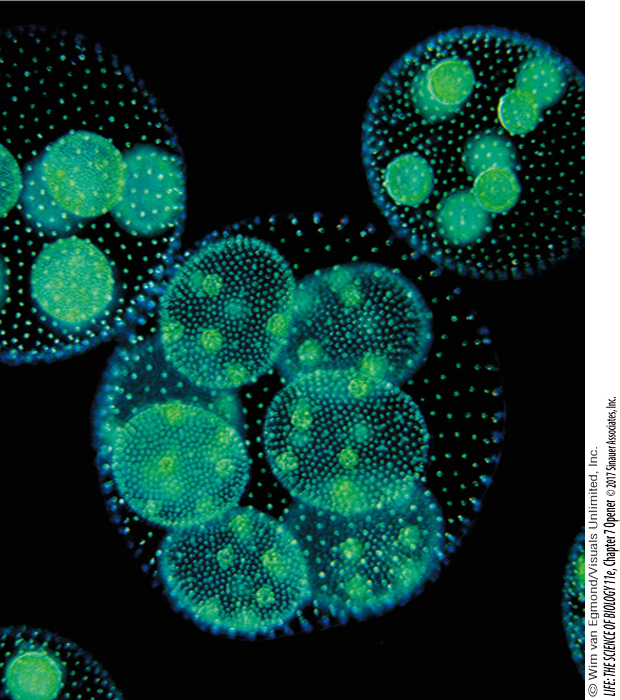Chapter Introduction
131
7
key concepts
7.1
Signals and Signaling Affect Cell Function
7.2
Receptors Bind Signals to Initiate a Cellular Response
7.3
The Response to a Signal Spreads through the Cell
7.4
Cells Change in Response to Signals in Several Ways
7.5
Adjacent Cells in a Multicellular Organism Can Communicate Directly
Cell Communication
and Multicellularity

investigating life
A Signal for Bonding
Prairie voles (Microtus ochrogaster) are small rodents that live in temperate climates, where they dig tunnels in fields. When a male prairie vole encounters a female, the female enters her reproductive cycle and mating (which can take hours) often ensues. After mating the pair stays together, building a nest and raising their pups. The bond between the two voles is so strong that they stay together for life. Contrast this behavior with that of the montane vole (M. montanus), which is closely related to the prairie vole and lives in the hills not far away. In this species, mating is quick, and afterward the pair separates. The male looks for new mates and the female abandons her young soon after they are born.
The reason for these dramatic behavioral differences lies in the brains of these two species. When prairie voles mate, the brains of both males and females release specific peptides consisting of nine amino acids. In females, the peptide is oxytocin; in males, it is vasopressin. The peptides circulate in the bloodstream and reach all tissues in the body, but they bind to only a few cell types. These cells have surface proteins called receptors, to which the peptides specifically bind, like a key inserting into a lock.
The binding of peptide to receptor causes the receptor, which extends across the cell membrane, to change shape. Within the cytoplasm, this change sets off a series of events that ultimately result in changes in behavior. The receptors for oxytocin and vasopressin in prairie voles are most concentrated in the regions of the brain that are responsible for behaviors such as bonding and caring for young. In montane voles, there are far fewer receptors for these peptides, and as a result, fewer bonding and caring behaviors. Clearly, oxytocin and vasopressin are signals that induce these behaviors.
Intercellular signaling is a hallmark of multicellular organisms. A cell’s response to a signal molecule takes place in three sequential steps. First, the signal binds to a receptor in the cell, often embedded in the outside surface of the cell membrane. Second, signal binding conveys a message to the cell. Third, the cell changes its activity in response to the signal. In a multicellular organism, these steps lead to changes in that organism’s functioning, with signaling allowing different types of cells and tissues to work together.
Is oxytocin the “trust” signal in humans?